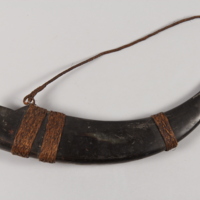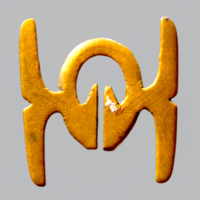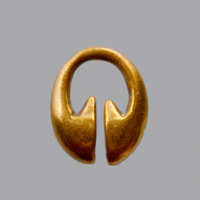Drinking horn
Text
This particular specimen, adorned with woven and dyed rattan, served as drinking vessel for an alcoholic beverage called basi (inventory 1888, MVW archives). The drink, made from fermented sugarcane juice, was produced and consumed by men only and drunk mostly on special occasions and during festivities (Jenks 1905: 144). (Oliver Moiseanu 2009: 54-55)
Collector's comment: "During canjaos (festivities), [such] drinking horns, made from carabao horn, attracted my attention; decorated on the top and bottom ends with nicely fabricated bejuco netting, a strap made from the same material connects the two ends and is used for wearing the horn; at the open end of the horn is an indent for drinking" 1 (Schadenberg 1887: 150). (Sri Kuhnt-Saptodewo 2009: 54)
1 German original: "Bei Canjaos (Festgelagen) fielen mir Trinkhorner aus Carabao-Horn auf; dieselben sind oben un unten mit nett gearbeitetem Bejucogeflecht versehen, ein Band aus gleichem Geflecht verbindet das obere und untere Ende, so dass das Horn umgehangen werden kann; an dem offenen Ende des Hornes befindet sich ein Ausschnitt zum Trinken."
Share this



